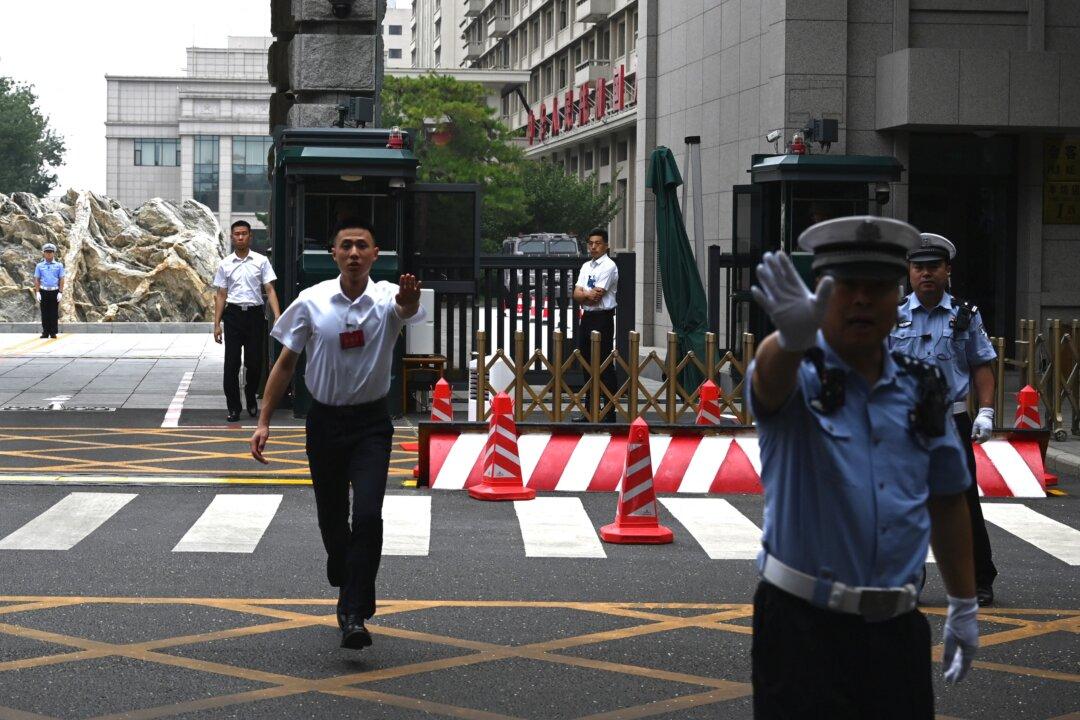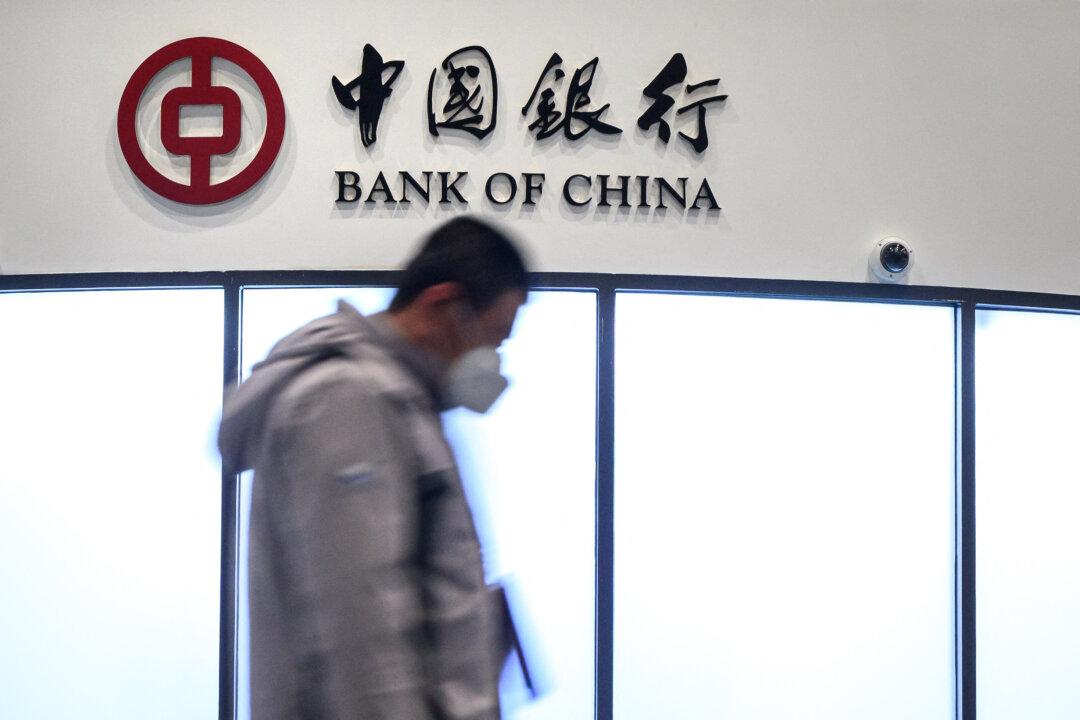NEWS ANALYSIS
Chinese banks generally follow a fairly straightforward business model—so simple, it often has only one step: lend money to state-owned enterprises and government-sponsored infrastructure projects.
It matters little whether these entities can repay the loans. A willingness to lend aligns with the Chinese Communist Party’s mandate to increase economic output and keep jobs in place. Bank profits can be managed by selectively writing down bad loans. When the loans become truly nonperforming, they'll be restructured or sold off to one of the state-sponsored “asset management companies,” or bad banks.
Rinse, and repeat.
This playbook has been followed for decades. And the most recent monthly data from the People’s Bank of China (PBoC) confirms that banks have doubled down on this practice in 2015.
Record Lending Activity
While the major Chinese banks are publicly traded entities, they are not comparable to Western banks which have an independent board, a risk-management department, and the legal obligation to prioritize profits to their shareholders.
Chinese banks are lame-duck arms of the Chinese Communist Party, forced to carry out the Party’s economic policy decisions—many times in conflict with their own priorities as profit-seeking entities—while preserving a semblance of normal operations for their public shareholders. In other words, Chinese large banks have limited free will to operate independently.
The banks gave out loans worth 11.1 trillion yuan (US$1.73 trillion) in the first 11 months of the year, according to data from the PBoC. Even before adding December’s figures, this year’s lending activity has already surpassed 2014’s record 9.78 trillion yuan ($1.51 trillion) in loans issued.
So who are they lending to?
The majority of loans were for mortgages, transportation infrastructure, and most importantly, troubled companies that stayed afloat only because banks gave them new loans to pay off old debt, central bank sources told Caixin, a China-based financial media.
Mortgages were boosted by six interest rate cuts since late 2014, liberalized household registration policies, and other measures to support a struggling housing market. Beijing made transportation infrastructure a major policy agenda, looking to attract more people to lower-tiered cities. China’s Ministry of Transportation announced that fixed asset investment in roads and waterways amounted to 1.65 trillion yuan ($255 billion) during the first 11 months of 2015, up 107 percent from 2014.
Banks had little choice but to perpetuate the Ponzi scheme of giving loans to struggling companies. They were sometimes strong-armed by government officials to lend to these companies because letting them fail would drive up social instability, one bank’s risk-management executive told Caixin.
Chinese leaders have talked about deleveraging, which was part of the plan to support the stock market and orchestrate a large-scale debt-to-equity swap. But the stock markets crashed and the country’s indebtedness is actually rising—having already surpassed that of many developed economies. According to data from the Bank of International Settlements, China’s 240 percent nonbank corporate debt-to-GDP ratio is among the highest in the world, higher than the United States and Germany.
Managing Bad Loans
Hong Kong-based investment bank CLSA estimates nonperforming loans (NPLs) could be as high as 8.1 percent of all bank loans, compared to official statistics of 1.6 percent. NPLs are generally loans that are over 90 days past due.
Western banks mark down the value of their NPLs to a clearing price and then sell the loans. Chinese banks are sometimes reluctant to do so. Labeling a borrower as delinquent requires reporting to the PBoC, which will likely force other banks to also write down their loans. Such actions would encourage more bankruptcies and layoffs, something Beijing doesn’t want. The problem is more acute at mid-tier and smaller unlisted banks that have less support from the state asset management companies, causing potential capital shortfalls of unknown proportions.
Independent analysis of banks’ balance sheets by UBS found that at 18 listed Chinese banks, overdue loans not written down jumped 57 percent to 645 billion yuan ($101 billion) in the first half of this year from the end of 2014, while NPLs not written down increased 17 percent to 692 billion yuan.
Fifteen years ago, Beijing set up four state-owned “asset management companies” to buy up bad debt from the nation’s banks. These so-called bad banks include Great Wall Asset Management Corp., China Cinda Asset Management Co., China Huarong Asset Management Co., and China Orient Asset Management Corp.
The companies buy up the junk loans at a discount, taking them off the hands of Chinese banks. This has the benefit of keeping actual bad debt ratios low at banks—though then they are simply freed up to issue more loans of dubious quality.
These bad banks have a wide mandate to buy troubled assets. According to ratings agency Moody’s Investors Service, the four bad banks could absorb as much as $41.2 billion in additional bad loans over the next five years. In the past two years alone, Moody’s estimates China’s bad-bank industry has absorbed almost one trillion yuan ($154.3 billion) in bad loans.
It’s unclear how the bad banks are performing. They’re not required to disclose prices paid for the distressed assets, so it’s difficult to estimate actual returns for the bad banks.
State-Sanctioned ‘Ponzi’
Essentially, the Chinese Communist Party—through the nation’s banking system—is overseeing the creation as well as disappearance of loans, and passing on very little cost to inefficient state-owned enterprises.
Up until recently, however, the bad banks—and their toxic balance sheets—were owned by the Chinese government. But increasingly, the bad banks are passing the risk on to institutional investors and even retail investors.
Two of the banks—Cinda and Huarong—have already publicly listed their shares in Hong Kong, taking advantage of investors chasing yield in a low interest rate environment.
Huarong, one of the bad banks, recently put 51.5 billion yuan ($8 billion) of NPLs for sale on Alibaba Group’s popular Taobao e-commerce platform.
Great Wall announced Dec. 24 that China’s National Social Security Fund and China Life Insurance will buy stakes in the firm. Financial terms were not disclosed, but the purchases might allow China’s Ministry of Finance, which currently owns all of the bad banks, to slowly extricate itself.
Great Wall has plans to bring five to eight more institutional investors for up to a 20 percent stake by June 2017, according to The Wall Street Journal, who suggests Great Wall may be readying a future IPO.
If these plans hold, Great Wall will pass its risk on to the National Social Security Fund, China Life Insurance, and others—all controlled by the Chinese Communist Party—and whom millions of Chinese citizens look to for retirement income and financial security.
And therein lies the crux of the matter. The Party is systematically ridding itself of the responsibilities of poor past economic decisions, massive overleveraging, and toxic loans.
Who will be left holding the bag? Retail investors, foreign investors, and unsuspecting Chinese citizens and retirees.





